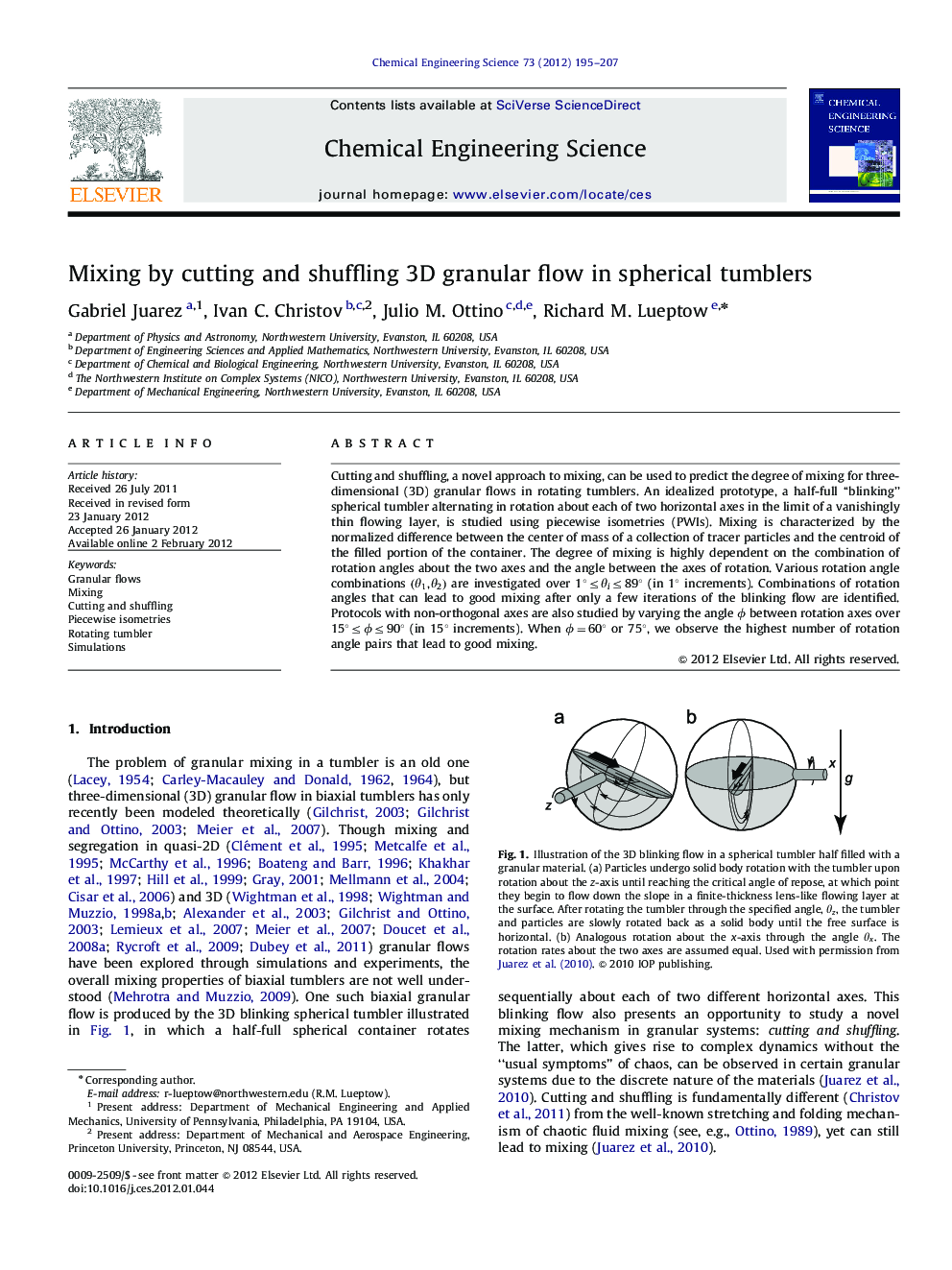| Article ID | Journal | Published Year | Pages | File Type |
|---|---|---|---|---|
| 155854 | Chemical Engineering Science | 2012 | 13 Pages |
Cutting and shuffling, a novel approach to mixing, can be used to predict the degree of mixing for three-dimensional (3D) granular flows in rotating tumblers. An idealized prototype, a half-full “blinking” spherical tumbler alternating in rotation about each of two horizontal axes in the limit of a vanishingly thin flowing layer, is studied using piecewise isometries (PWIs). Mixing is characterized by the normalized difference between the center of mass of a collection of tracer particles and the centroid of the filled portion of the container. The degree of mixing is highly dependent on the combination of rotation angles about the two axes and the angle between the axes of rotation. Various rotation angle combinations (θ1,θ2)(θ1,θ2) are investigated over 1°≤θi≤89°1°≤θi≤89° (in 1° increments). Combinations of rotation angles that can lead to good mixing after only a few iterations of the blinking flow are identified. Protocols with non-orthogonal axes are also studied by varying the angle ϕϕ between rotation axes over 15°≤ϕ≤90°15°≤ϕ≤90° (in 15° increments). When ϕ=60°ϕ=60° or 75°, we observe the highest number of rotation angle pairs that lead to good mixing.
► It is shown cutting and shuffling describes mixing in biaxial granular tumblers. ► Flow in a half-full sphere is characterized using piecewise isometry mappings. ► The degree of mixing is inferred from measuring the center of mass of seed particles. ► Cutting and shuffling is maximized for certain parameters and rotation angles. ► For finite-thickness flowing layers, cutting and shuffling still leads to good mixing.
